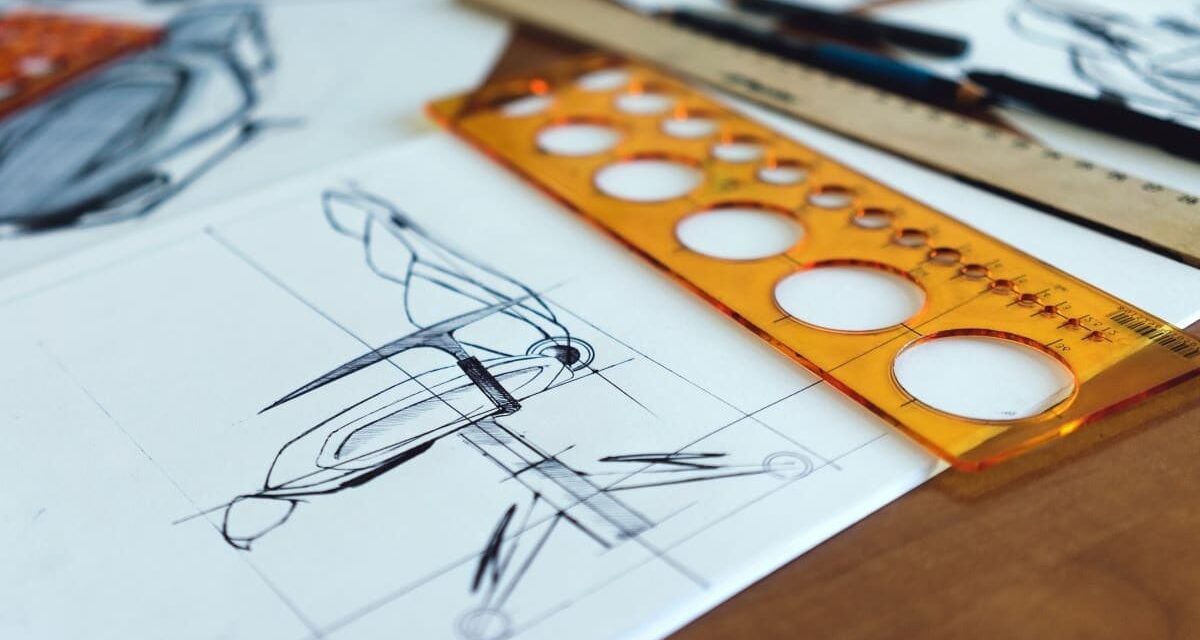Some of the largest companies in the world, such as Apple, Google, Samsung etc, quickly adopted the approach to design thinking. Design Thinking is also taught in the largest universities in the world, (Stanford, Harvard, MIT etc.). But, do you know what design thinking is and why is so popular? This is exactly what we are going to explain to you in this article.
What is Design Thinking?
Originally, design thinking appeared as a way to teach engineers to approach problems in a creative way, as designers do. One of the first people to have written on this subject is John E. Arnold, professor of mechanical engineering at the University of Stanford. In 1959, he wrote “Creative Engineering”, The text that established the four areas of design thinking. From there, design thinking began to evolve as “way of thinking” in the fields of science and design engineering.
With the boom in human -centered design in the 80s and the creation of the IDEO design consulting company in the 90s, design thinking has become more and more popular. At the beginning of the 21st century, he entered the business world. In 2005, the D.School of the University of Stanford began teaching design thinking as an approach to technical and social innovation.
Indeed, many of the methods and techniques used as part of the Thinking design were borrowed from the designer toolbox.
But then, what is design thinking?
It is both an ideology and a process that aims to solve complex problems in a user -centered way. It focuses on obtaining practical results and solutions that are:
- Technically achievable : they can be developed in functional products or processes;
- Economically viable : the company can afford to implement them;
- Desirable for the user : They meet a real human need.
According to the ideology underlying design thinking, to find innovative solutions, we must adopt the state of mind of a designer and approach the problem from the user's point of view. At the same time, the Thinking design is to get their hands dirty; The objective is to transform your ideas into tangible and testable products as quickly as possible.
The five steps in the Thinking design process
The Thinking design follows a five -step process:
1. Empathy
During this first step, the designer observed Consumers for better to understand How they interact with a product or a problem, or how they are affected by it. The observation must be done with empathy, that is to say without passing judgment and without transmitting preconceived ideas on the needs of the consumer. Observation with empathy is powerful because it allows discover problems whose consumer did not even suspect existence or that he could not verbalize himself. From this stage, it is easier to Understanding human need for which you design.
2. The definition of the problem
In this second step, you gather your observations from the first step to define the problem that you try to solve. Think about difficulties to which your consumers come up against what is a problem for them recurring and what you gleaned from manner of which they are affected by this problem. Once you have synthesized your conclusions, you will be able to define the problem they face.
3. Find ideas
The next step is to launch ideas on The way to solve the problem that you have identified. These ideas sessions can take place in a group, where your team meets in an office space that encourages creativity and collaboration. The important thing is generate a large number of different ideas. At the end of this process, you will have some that will allow you to move forward.
4. The prototype
This is the step that transforms ideas into a real solution. Prototypes are not supposed to be perfect. The goal of a prototype is to quickly present a concrete version idea to see How is it accepted by consumers. Among the examples of prototypes, let us quote a referral page to test the desire of consumers for a product or video which demonstrates rationalized logistics processes.
5. The test phase
Once you have given a prototype solution to consumers, you must observe How they interact with her. This test stage is that during which you Collect comments/feedback on your work.
The process of Design Thinking is iterative Rather than linear. At the end of the fifth stage, you will probably have to return to one or more of the other stages. The tests may have shown that you should develop another prototype, which would bring you back to the fourth stage. Or it has been shown that you have badly defined the consumer's needs. In this case, you will have to return to a previous step in the process.
What are the advantages of design thinking at work?
As a designer, you have a central role to play in the design of products and experiences that your business puts on the market. Integration of Design Thinking in your process can Bring added value considerable, in guaranteeing that products that you design are not only desirable For customers, but also viable in terms of budget and resources. In this perspective, let us examine some of the main Advantages of use Design thinking within your company:
- Considerably reduces marketing deadlines : By emphasizing problem solving and the search for viable solutions, design thinking makes it possible to considerably reduce the time devoted to design and development, in particular when associated with Lean and Agile methods.
- Savings and excellent return on investment : The faster marketing of high -performance products allows the company to save money. For example, IBM teams applying design thinking practices, calculated a return on investment up to 300 %.
- Improves customer retention and loyalty : The Thinking design guarantees a user -centered approach, which, in the end, stimulates user engagement and customer loyalty in the long term.
- Promotes innovation : Design Thinking consists in questioning the hypotheses and established beliefs, by encouraging all stakeholders to think outside the box. This promotes a culture of innovation that extends far beyond the design team.
- Can be applied to the company's scale : The advantage of design thinking is that it is not reserved for designers. It is based on group reflection and encourages collaboration between the teams. What's more, it can be applied to practically any team in any sector.
That you establish a culture of Design Thinking on a business level or you just try to improve your user -centered design approach, the Design Thinking YOU will help innovateto you concentrate on the userin order to designer Who resolve really the problems users.






